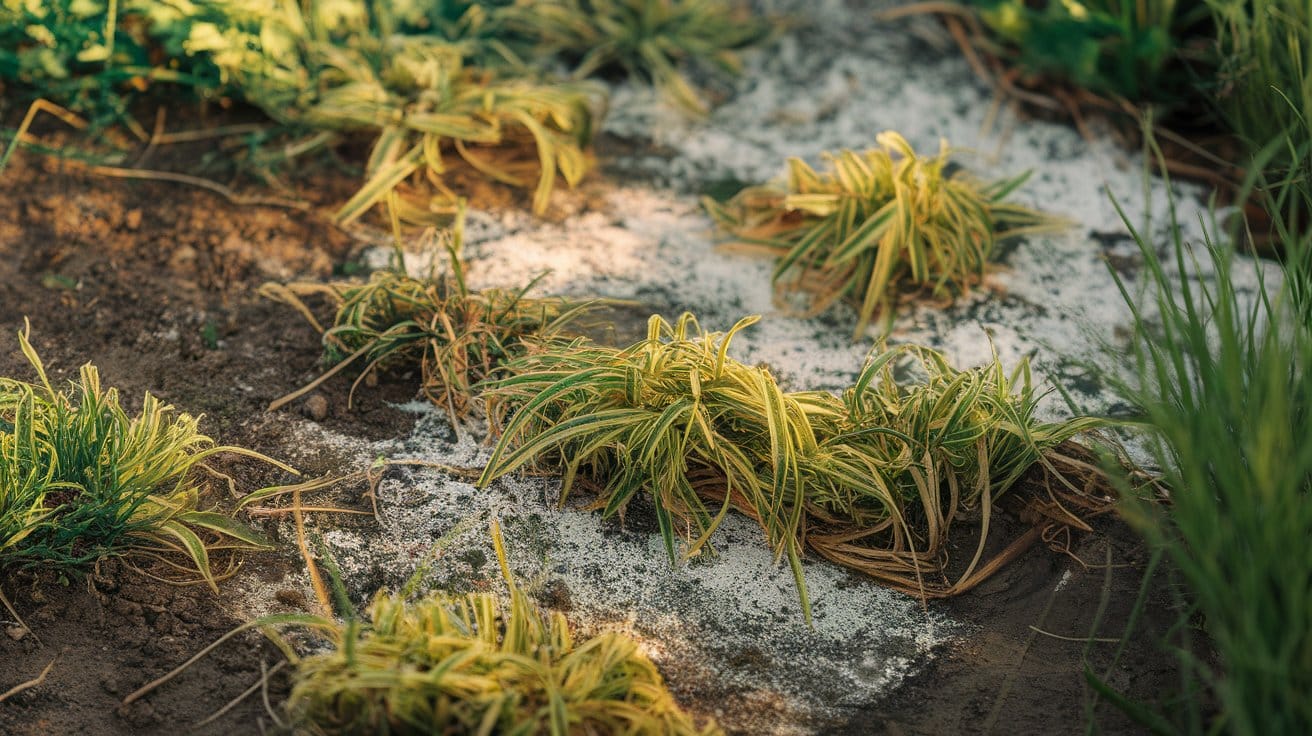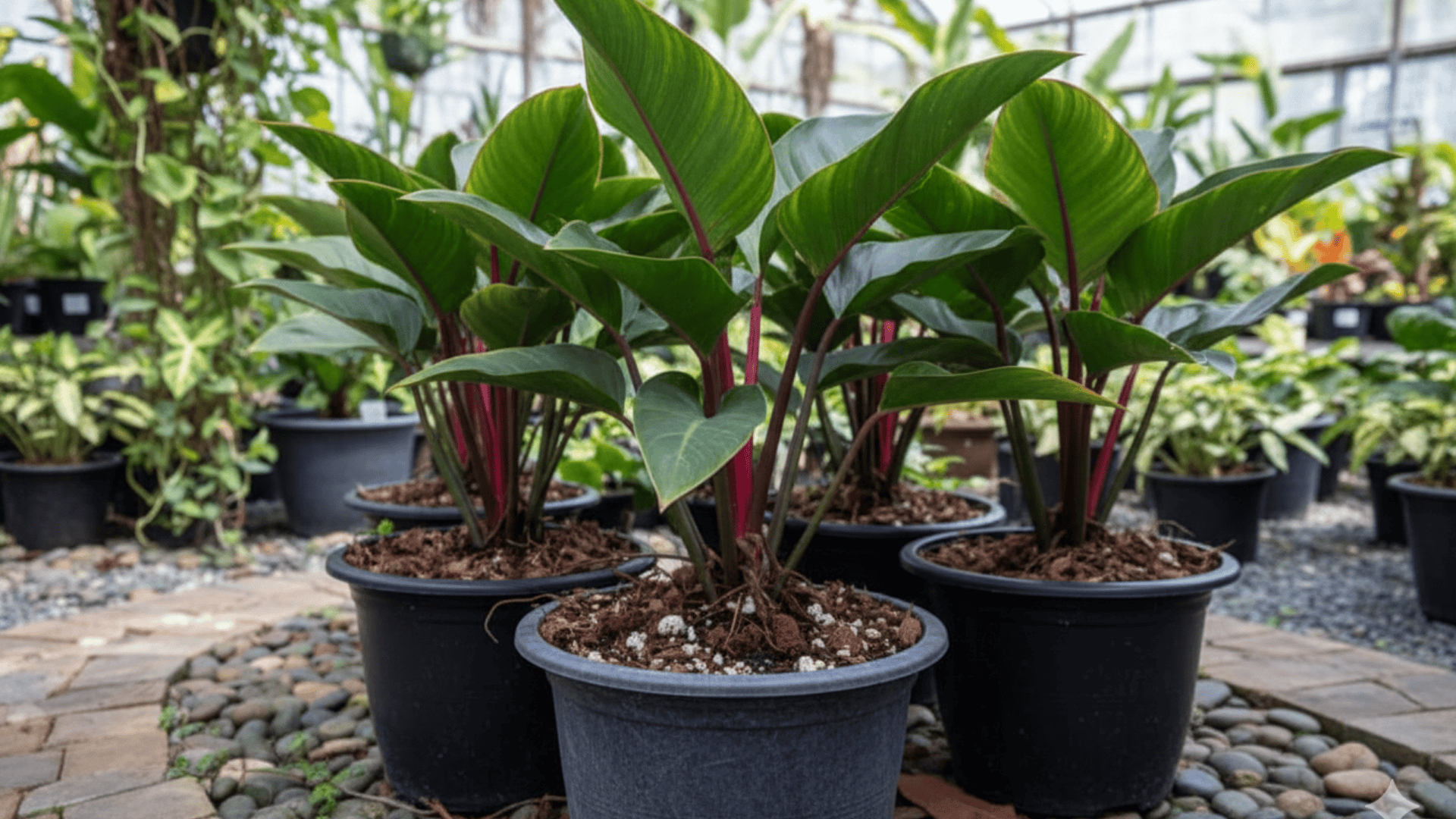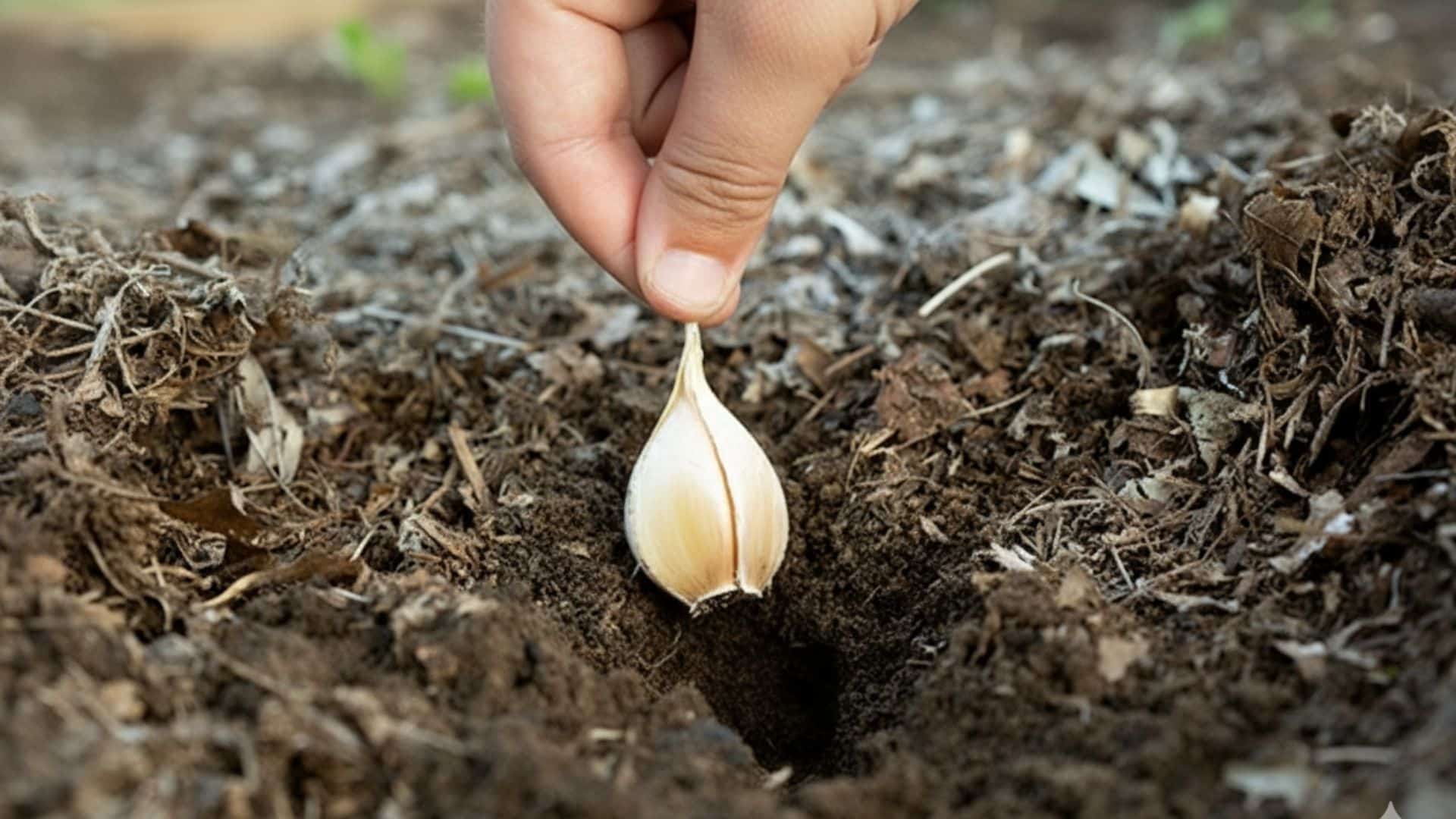When it comes to lawn care, more isn’t always better. I learned that the hard way.
One spring, thinking I was giving my grass a strong nutrient boost, I spread a double dose of fertilizer.
Within days, my once lush, green yard started turning yellow and patchy.
I couldn’t believe it. Something meant to help had done the opposite.
If you’ve ever looked at your lawn and thought you might have gone too far, you’re not alone.
Yes, you can over-fertilize your lawn, and it’s a mistake many homeowners make when chasing that perfect green look.
Let’s go over what happens, how to spot the signs, and how to fix it, all from experience and proven lawn care methods.
What Is Overfertilization of a Lawn?
Many homeowners ask, “Can you over-fertilize your lawn?”
The answer is yes, and it can cause long-term damage to both your grass and soil.
Overfertilization occurs when more nutrients are applied than the lawn can absorb. Fertilizer encourages healthy growth in the right amount, but too much reverses the effect.
When you over-fertilize your lawn, salts build up in the soil, pulling water from the roots and leading to dehydration, yellowing, and burned patches of grass.
If you’ve ever wondered how you can over-fertilize your lawn without realizing it, it often happens through small mistakes like overlapping passes or applying it before rain.
Signs of an Over-Fertilized Lawn
Spotting fertilizer damage early gives your lawn the best chance to recover.
Here are the most common signs that you’ve applied more fertilizer than your lawn can handle, and what they mean.
1. Yellow or Brown Grass

Yellow or brown patches are the first clear clue.
Grass tips begin to dry and fade, progressing from light yellow to burnt brown.
This occurs when excessive nitrogen scorches the blades, preventing proper moisture absorption.
You may also notice darker streaks or stripes where fertilizer overlapped, causing concentrated damage.
2. White or Crusty Soil Surface
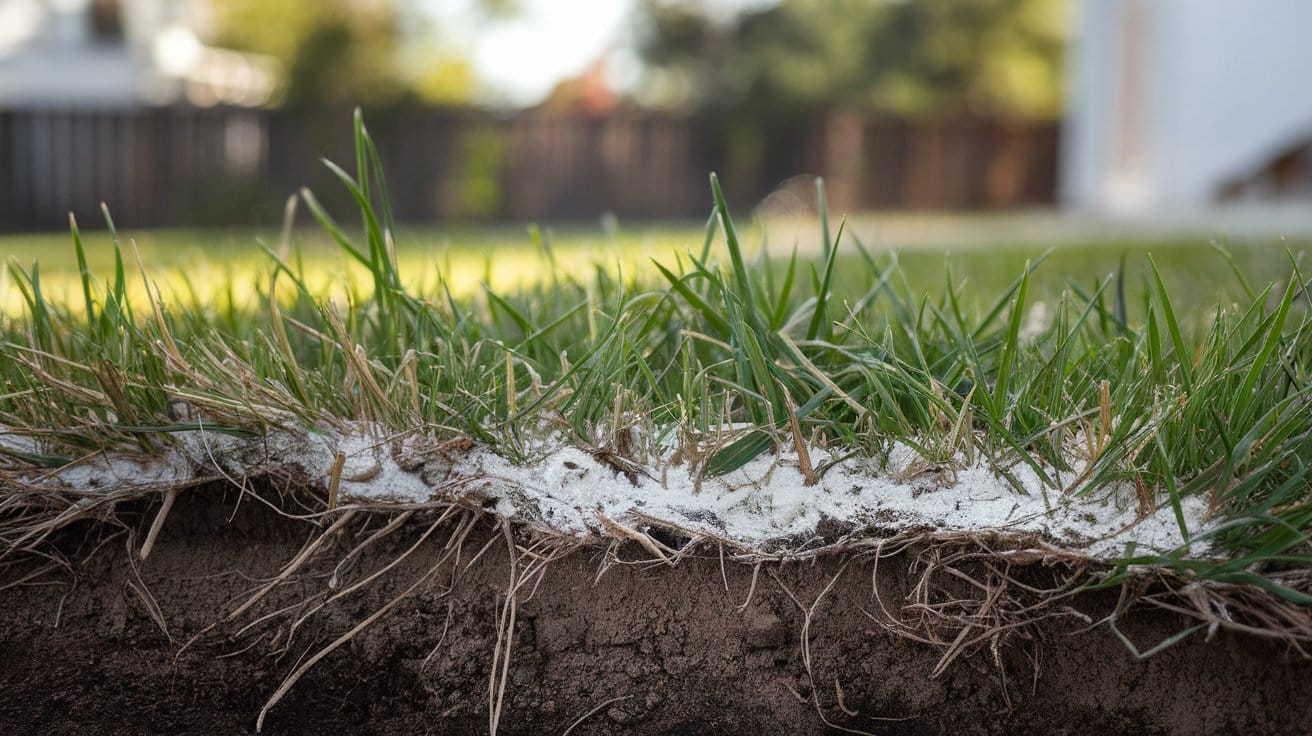
A powdery, white layer on the soil surface is a sign of fertilizer salt buildup.
This crust blocks airflow and moisture, eventually suffocating the roots.
If your soil feels hard or dusty after fertilizing, it’s time to deep-water to flush out the salts.
3. Wilting Even After Watering
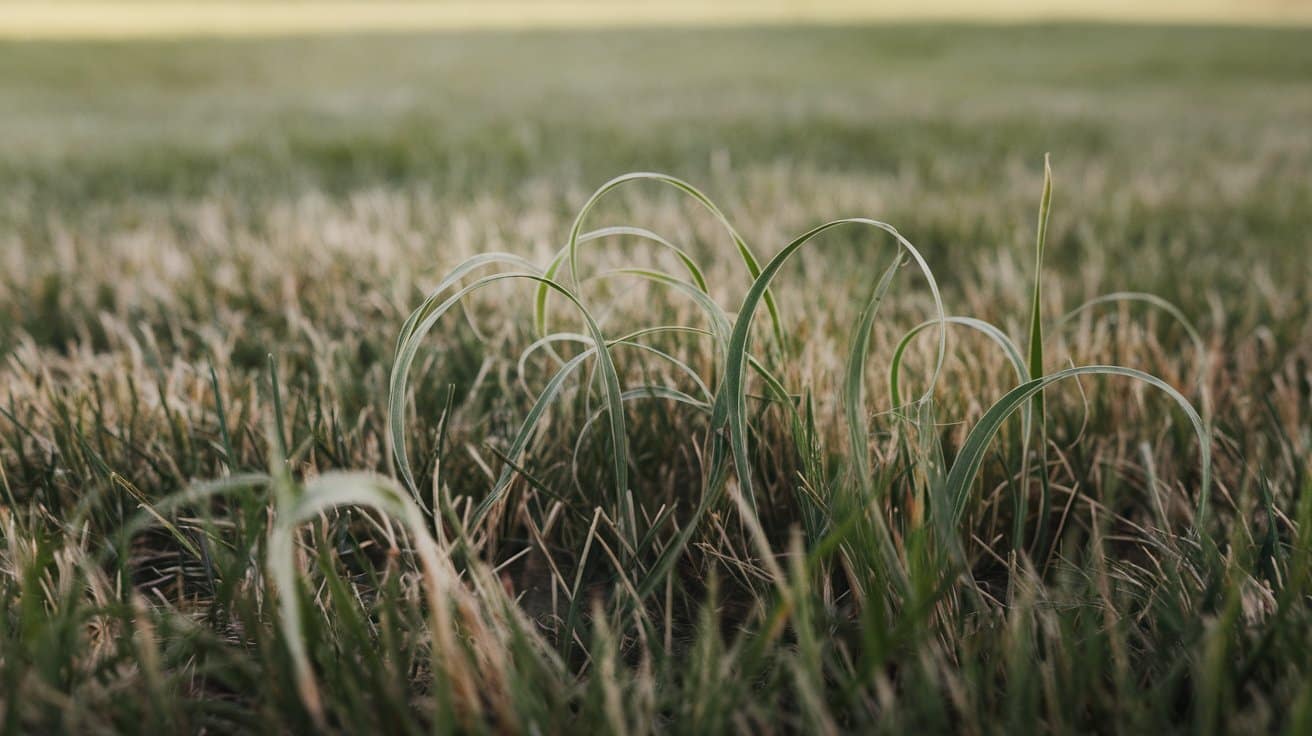
If you’re watering regularly but the lawn still looks wilted, it’s likely a chemical issue, not dehydration.
Fertilizer salts pull moisture away from the roots, making the grass appear dry even when the soil feels damp.
The blades may feel thin, weak, or curl inward as a result.
4. Uneven or Patchy Growth

Over-fertilized lawns often have sections that grow faster or appear darker than others.
Some areas thrive temporarily while others turn pale or die off.
This unevenness indicates inconsistent fertilizer coverage or overlapping during application.
5. Sudden Weed, Moss, or Algae Growth
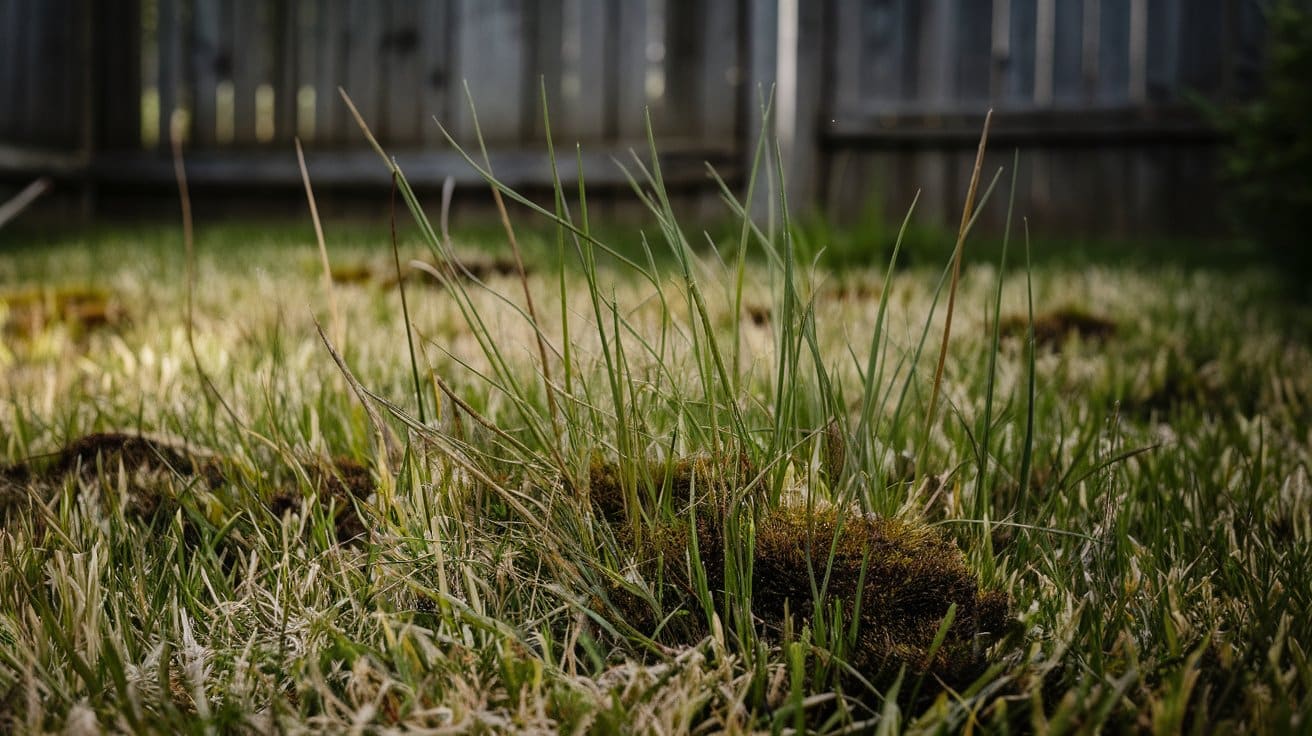
Too many nutrients can feed unwanted growth.
Over-fertilized lawns often develop thin patches of weeds, moss, or algae, especially in shaded or damp areas where the grass is weakest.
This is a clear sign that the soil’s nutrient balance has shifted.
6. Burned Tips and Curled Grass Blades
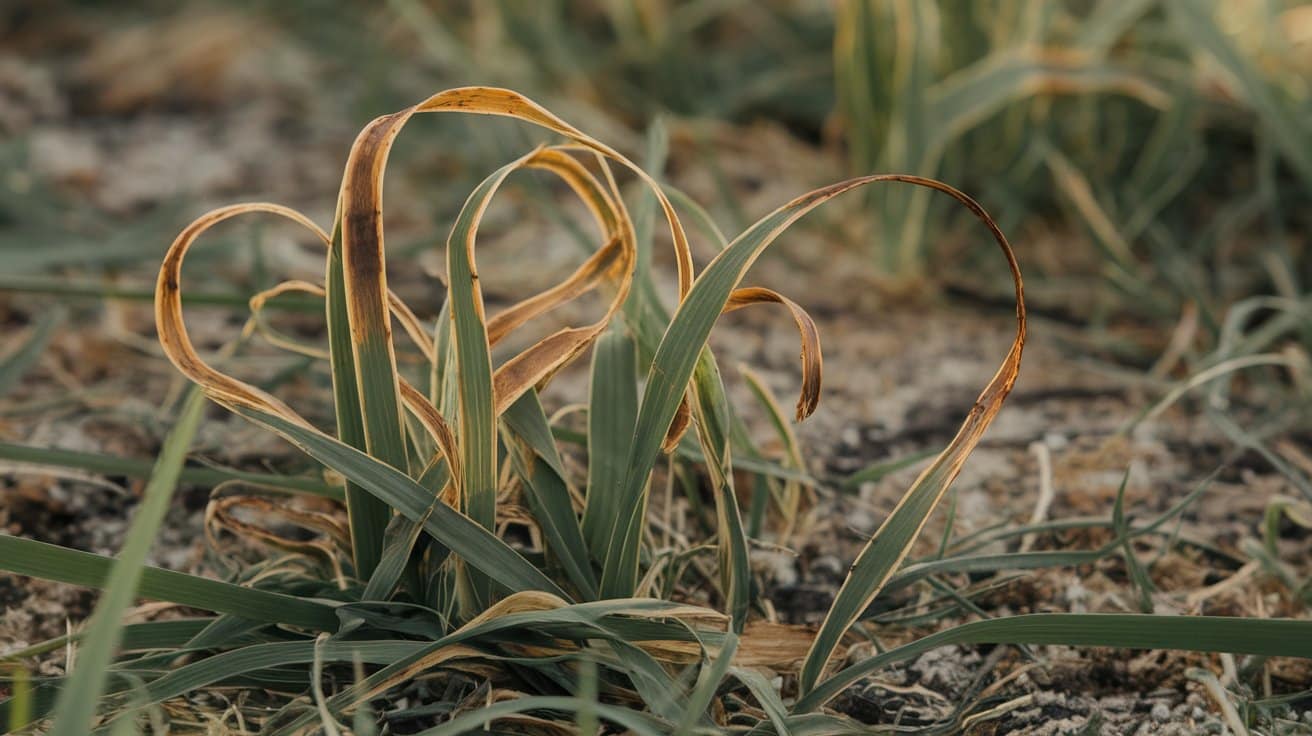
Take a close look at individual grass blades, especially near paths or areas with heavier fertilizer coverage.
Burned or curled edges are early signs of nitrogen stress.
The tips may dry out, turn brown, and become brittle, often spreading down the blade if left unchecked.
In some cases, the grass appears shriveled or twisted, as if it had been exposed to heat, even in mild weather.
This happens when fertilizer salts draw moisture from the leaves, dehydrating them from the inside out.
7. Hard, Compacted Soil
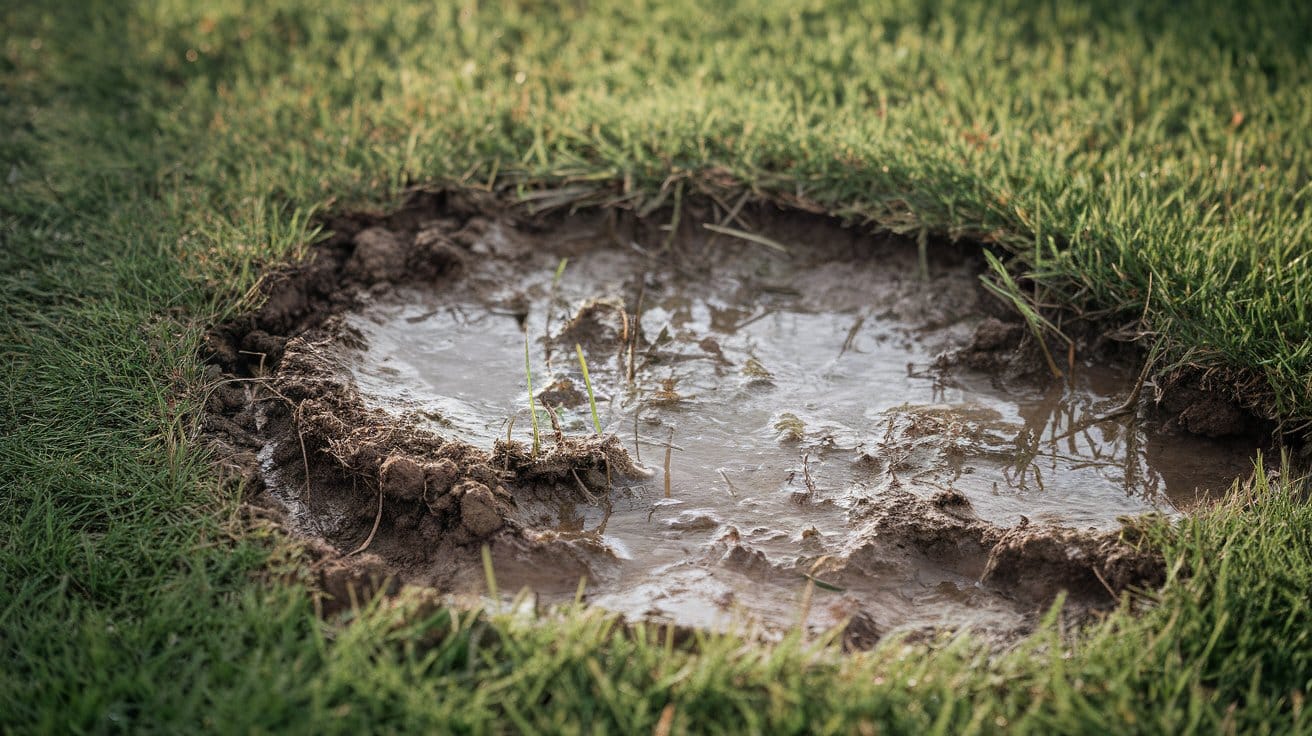
If your soil feels harder than usual or water pools on the surface instead of soaking in, chemical buildup has compacted the top layer.
This compaction limits oxygen and makes it harder for grass to recover.
Acting fast with watering and aeration helped save most of the grass before the damage spread.
When I first noticed yellowing and the crusty soil surface on my lawn, I realized I had gone overboard.
How to Fix an Over-Fertilized Lawn?
If your lawn has received too much fertilizer, don’t panic. Most overfertilised lawns can bounce back with the right approach and a bit of patience.
1. Water Thoroughly and Frequently
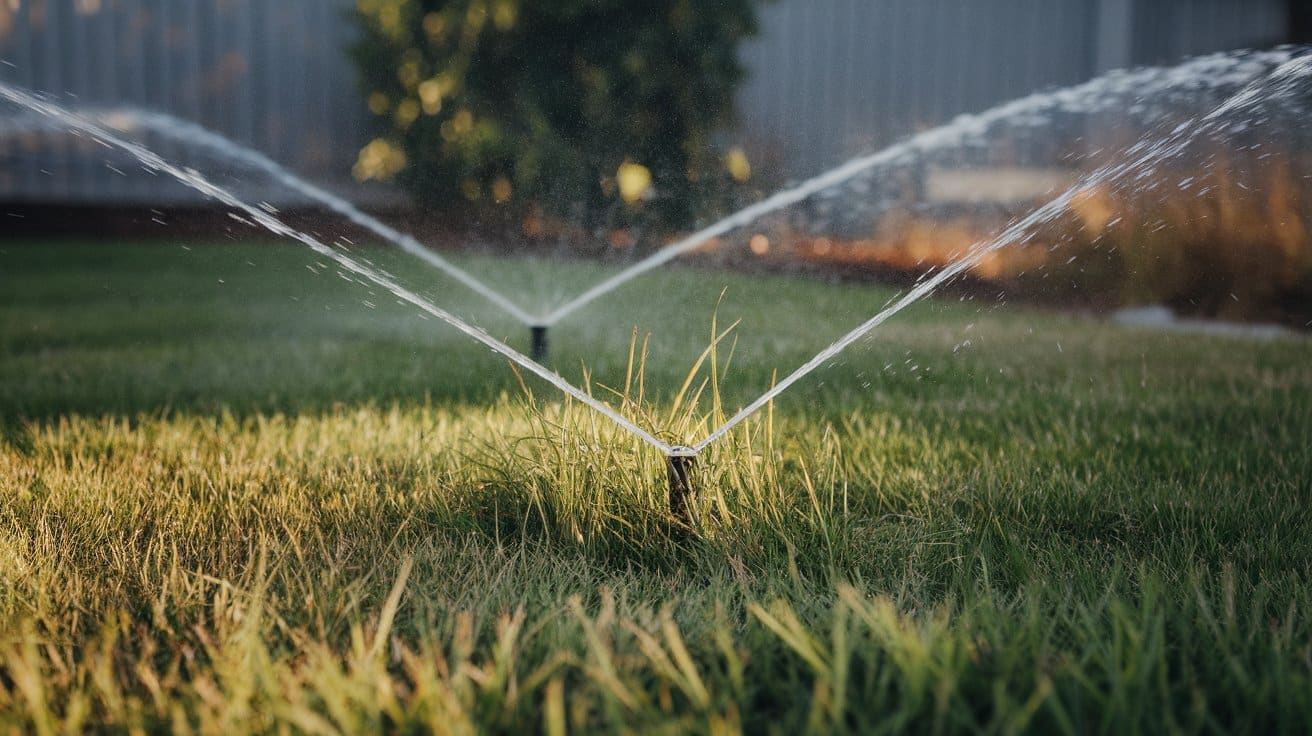
Start by watering your lawn deeply to flush out excess salts.
Run the sprinklers for about 20 to 30 minutes twice a day for the first few days.
The goal is to push fertilizer residues below the root zone.
After the first week, reduce watering to once a day, then return to your normal schedule once the lawn starts to recover.
This consistent flushing is the most effective step in reversing fertilizer burn.
2. Remove Visible Granules
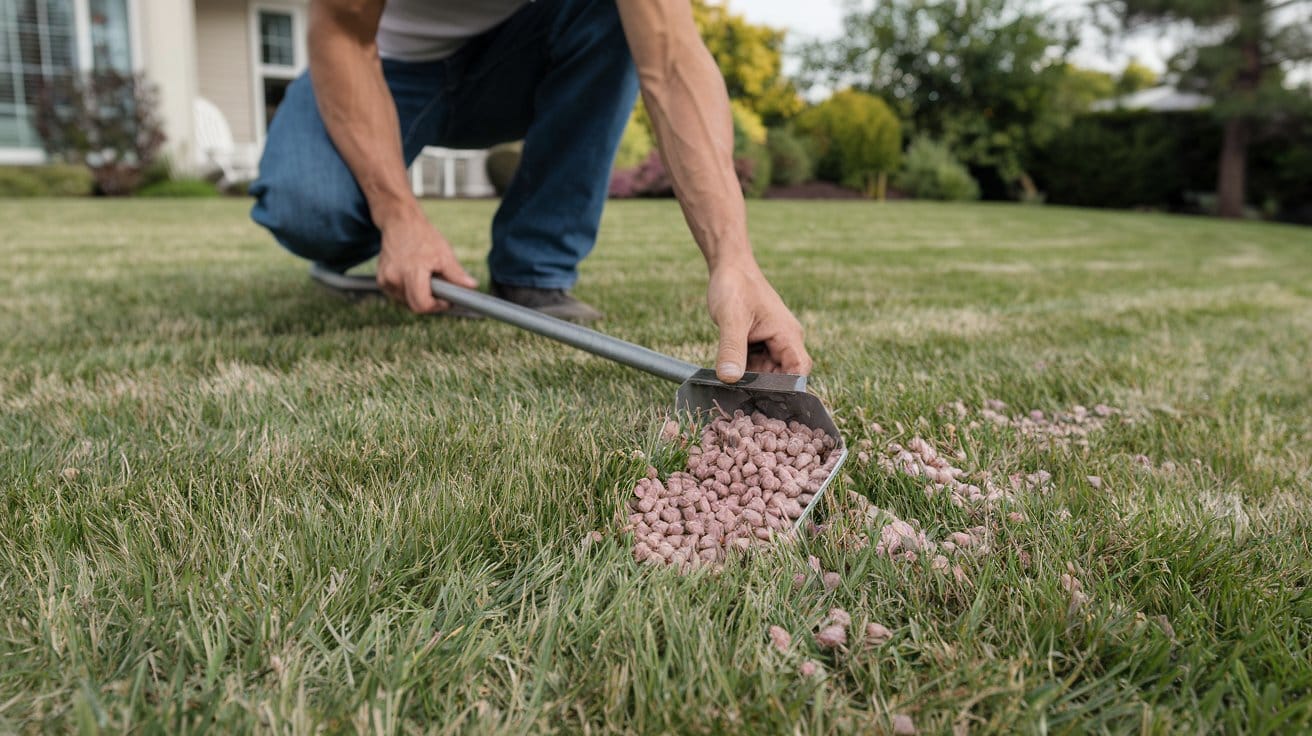
After watering, check the lawn surface carefully.
If you still see leftover fertilizer pellets, rake or sweep them away right away.
Each granule left in the soil continues to release concentrated nutrients, which can worsen the burn.
Pay special attention to edges, corners, and uneven areas where fertilizer tends to collect.
Clearing these quickly prevents further damage and allows your watering efforts to work effectively.
3. Aerate the Soil
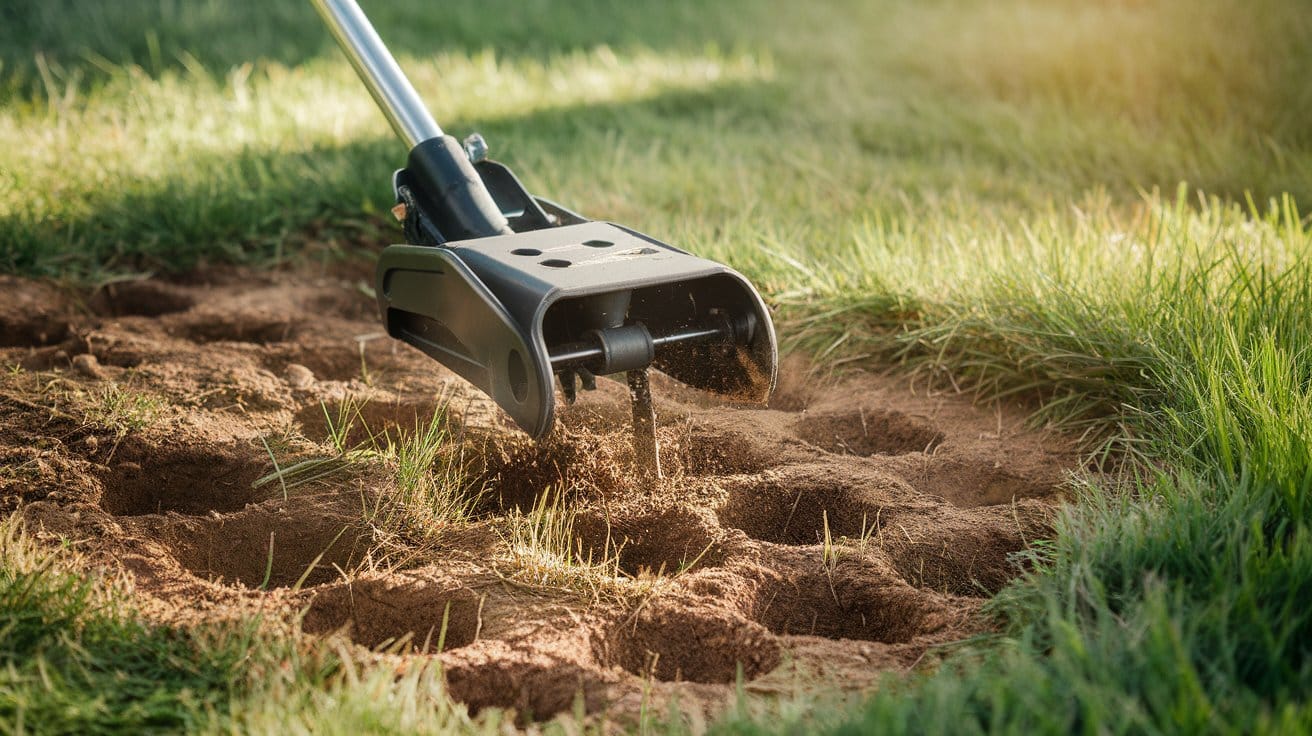
Once the lawn shows small signs of recovery, aerate it to improve airflow and water movement.
Aeration helps break up compacted soil and releases trapped salts that might still linger below the surface.
You can use a mechanical aerator for larger lawns or a manual core aerator for smaller areas.
This step helps oxygen reach the roots and prepares the ground for new, healthy growth.
4. Add Compost or Organic Material
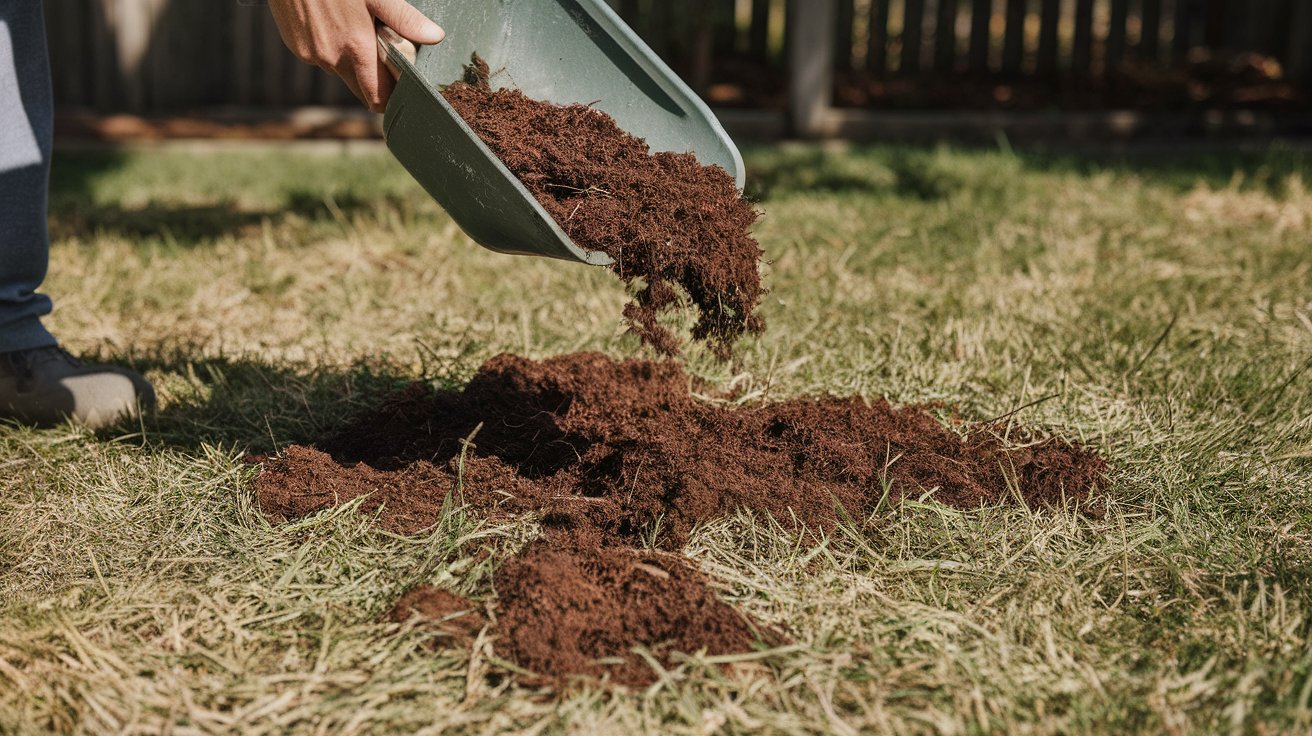
Spread a thin layer of compost or organic topsoil over the damaged areas.
This restores beneficial microbes and adds nutrients gently.
Compost helps improve drainage and rebuild soil structure without the harsh effects of chemicals.
The compost gave the recovering grass a natural boost without stressing it further.
When I did this step, I noticed new green shoots after two weeks.
5. Reseed Bare or Burned Patches

If some parts of your lawn are completely dead, reseeding is the best way to revive them.
Start by lightly raking the damaged area to loosen the topsoil and remove any dried grass.
Then, spread a grass seed blend that closely matches your existing lawn type for a consistent look.
Keep the soil evenly moist, especially during the first few weeks, to encourage germination.
Avoid applying any fertilizer during this stage, as the new roots are delicate and can be easily burned.
6. Monitor and Adjust Watering

Once you notice fresh green shoots appearing, gradually reduce watering frequency while maintaining deep-soaking sessions once or twice a week.
This encourages roots to grow deeper, making the grass more resilient and less dependent on frequent watering.
Consistent monitoring is crucial during this phase.
If the soil dries out too quickly or the grass begins to wilt, adjust your watering schedule slightly until the new growth has strengthened.
7. Skip Fertilization for a While
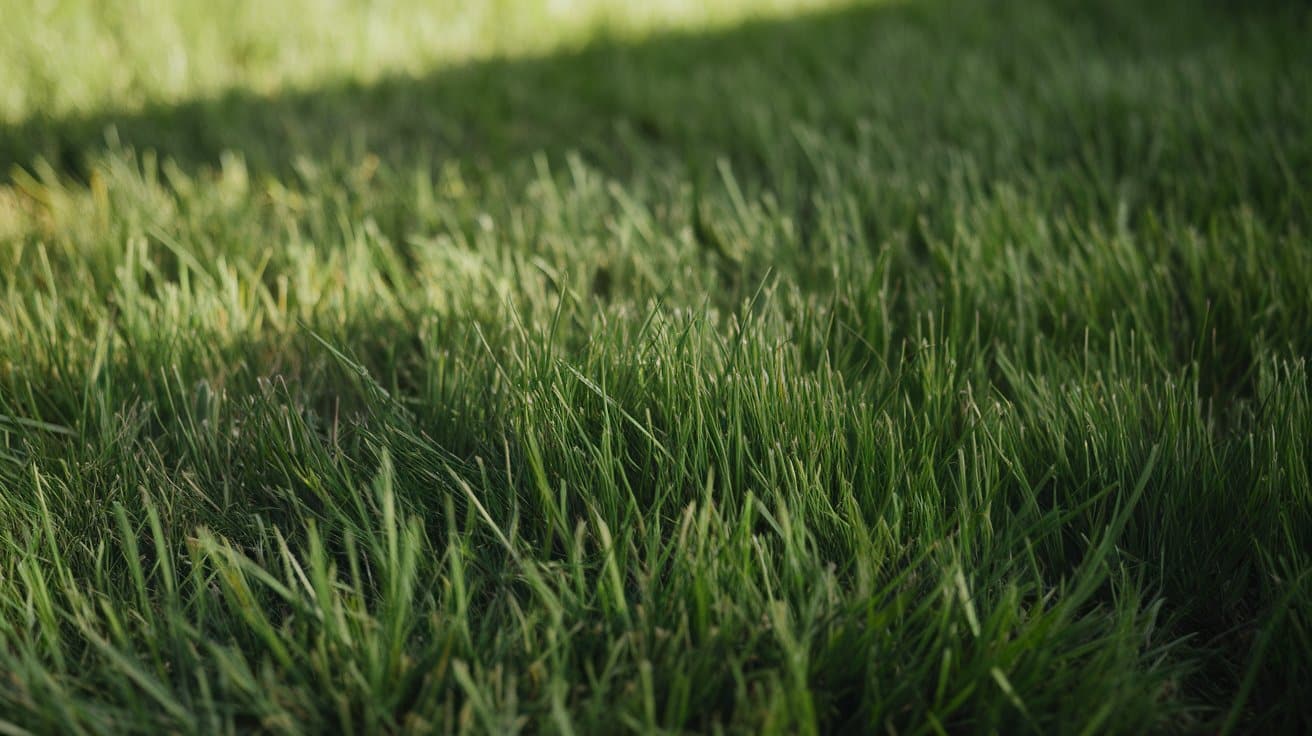
Resist the urge to fertilize again too soon. Wait at least four to six weeks before applying any product.
When you do resume, use half the usual amount and switch to a slow-release formula.
After following these steps, my lawn took about a month to regain its color and density.
The key was patience and steady care, not quick fixes.
Tips to Prevent Over-Fertilization
Before wrapping up, it’s worth knowing how to avoid this issue in the future.
These simple habits can help keep your lawn healthy and prevent damage from excessive fertilizer.
- Read fertilizer labels carefully and never exceed the recommended dosage.
- Measure your lawn area before applying any product to avoid overuse.
- Use slow-release or organic fertilizers for a steady nutrient supply.
- Avoid fertilizing during very hot weather or before heavy rain.
- Test your soil at least once a year to know what nutrients it needs.
- Keep a simple record of your fertilization schedule and results.
Since switching to a twice-a-year organic schedule, my lawn has remained thick, green, and stress-free throughout the entire season.
Conclusion
Over-fertilizing your lawn may seem like a minor mistake, but it can cause long-term harm if not addressed promptly.
The biggest lesson I learned is that lawns thrive on balance, not excess.
If your grass looks scorched or uneven, give it time, water, and organic care. With patience, your lawn can recover completely.
Take it as a reminder that a healthy yard is built on steady, thoughtful maintenance, not heavy feeding.
Have you ever dealt with fertilizer burn or patchy grass?
Share your story or lawn care tips in the comments below.
Frequently Asked Questions
Is It Safe for Pets and Children to Play on an Over-Fertilized Lawn?
Keep pets and children off treated areas until you’ve thoroughly watered and the grass appears healthy. Chemical burns can irritate paws and skin.
Will My Homeowner’s Policy Cover Damage from Over-Fertilization?
Most policies don’t cover lawn damage from improper maintenance or homeowner error. Check your specific policy terms for details on landscape coverage.
How Long Should I Wait Before Mowing an Over-Fertilized Lawn During Recovery?
Wait until new growth appears and grass reaches 3-4 inches tall. Use sharp blades and cut only the top third to avoid stressing recovering plants.

